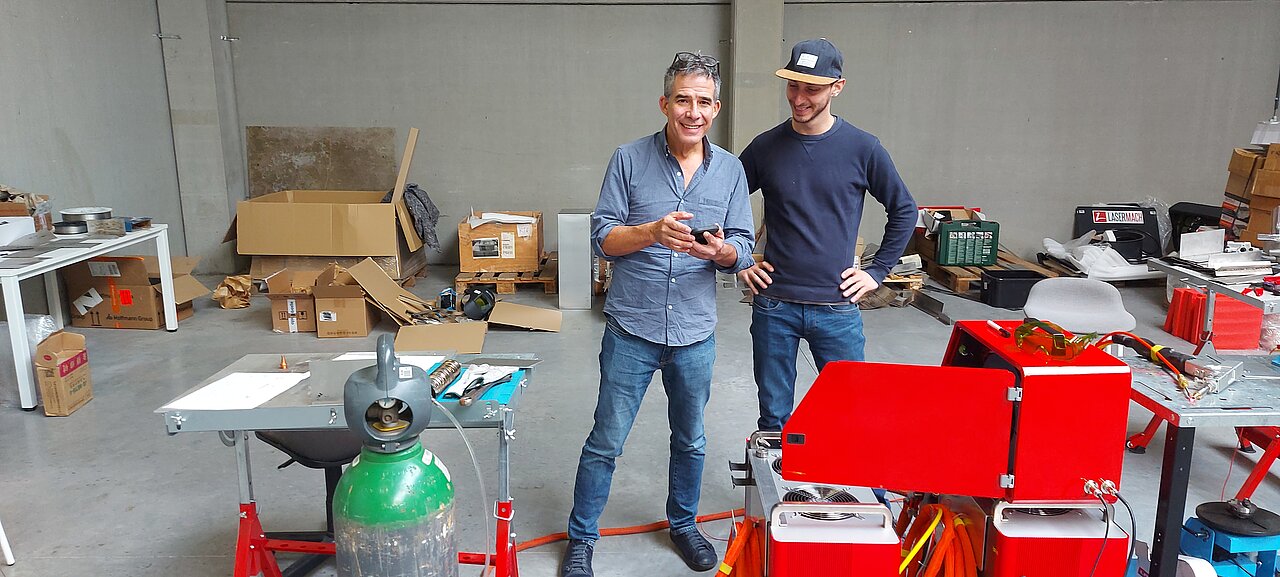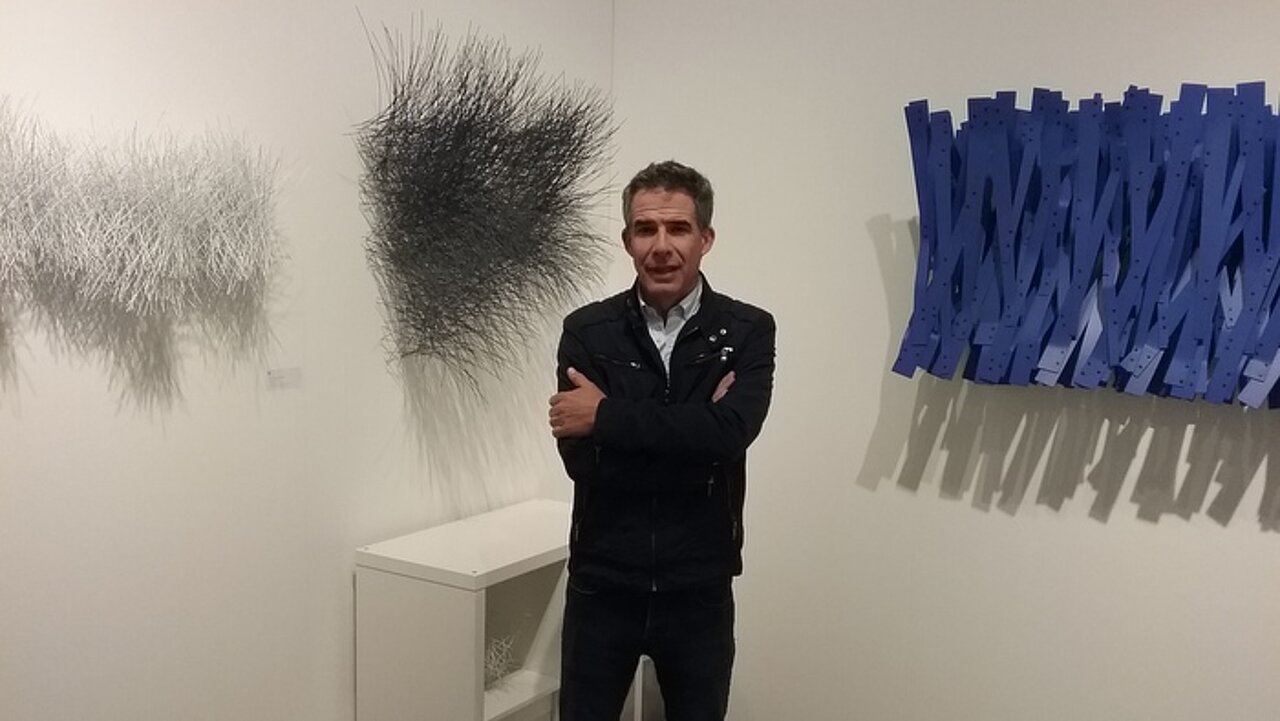
Ricardo Cardenas was born in Medellin, Colombia in 1966. He began art classes at the National school of Fine Arts at five years old and continued his studies with independent professors until the age of 22. He studied Civil Engineering in the Engineering school of Antioquia and then realized a Masters Degree in manufactures in the University of Massachusetts.
The artist searches a constant in his diverse pieces by the way he draws imaginary structures of ideas that he finds in nature. He fabricates objects with natural elements. When he begins his study or drawing, the impulse and the contrasting lines begin to open up possibilities. Then he begins a series of repetitions until he considers his drawings the starting point of sculptures.
His process is : to look, to think, to draw, draw...draw, select, calculate, build.
Ricardo Cardenas at Lasermach Training Centrum in Belgium
Laser welding Used in today's Art!


Ricardo Cárdenas
Cárdenas' work is an outstanding achievement in Colombian sculpture in recent years. His work delves into our relationship with reality and appeals to everything in it that is susceptible to becoming form: line, colour, volume and texture. His clearest intention is to objectify the line, in the sense of giving a concrete body to the two-dimensional. It is also his fundamental means of creation, and it is thanks to it that he manages to create the planes, volumes, forms and spaces that he articulates through precise structural calculations.
His works are built with metal rods, wire and welding, materials that reiterate the concept of unstable sculpture and its origin is born in the drawings of controlled spontaneity, repeated and impetuous lines. On certain occasions, he has given way to more ethereal, lighter forms that allow the observer to appreciate and visually traverse them. In this way, Cardenas transforms the materiality of the elements with which he works: what is naturally rigid achieves an organic movement, what is heavy gives the impression of lightness, and what is rough acquires a soft texture. In those works made with polyurethane hose and plastic straps, the degree of lightness and transparency is multiplied and the line is transformed into a composition of greater dynamism that, in most cases, refers us to organic elements such as birds' nests, clouds, mangroves or wetlands.
Nature has always been the motif of his artistic reflections. Although a certain figurative will is transversal to his work, the taste for abstraction and the desire to give priority to form prevails. They are works that incite curiosity about their interior and their content, thus stimulating the imagination and guiding it towards infinite possibilities. Most of them are open structures, achieved by the sum of different rectangular modules oriented with apparent randomness, but distributed with such care that space and light complement each other. In the same way, the shadows and brightness projected on itself and the surrounding areas, enrich and extend the work horizontally or vertically, giving it the impression that it can grow indefinitely.
"I try to represent the way the impressionists painted: through free and spontaneous action. I count on an infinity of pieces of different colours, shapes and sizes, which allow me to take them and place them in different ways, to finally create a sculptural work in an instinctive way."



